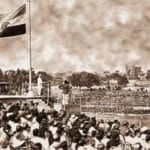Iron tools and agriculture
- The use of iron began in the subcontinent around 3000 years ago.
- Some of the largest collections of iron tools and weapons were found in the megalithic burials.
- Around 2500 years ago, there is evidence for the growing use of iron tools like axes for clearing forests and the iron ploughshare for increasing agricultural production.
Irrigation
- Irrigation works like canals, wells, tanks and artificial lakes were built during this time to increase production.
Also Read: Class 6 Ch 8 History- Ashoka, the Emperor who gave up war
Who lived in the villages?
- In the Tamil region, large landowners were known as vellalar, ordinary ploughmen were known as uzhavar, and landless labourers including slaves, were known as kadaisiyar and adimayi.
- In the northern part of the country, the village headman was known as the gram bhojaka. Usually, the post was hereditary. He was often the largest landowner, collected taxes from the village for the king, functioned as a judge and also sometimes as a policeman.
- Independent farmers, most of whom were smaller landowners, were known as grihapatis.
- Men and women such as the dasa and karmkara, did not own any land and had to work on the fields owned by others.
- Crafts persons such as the blacksmith, potter, carpenter and weaver were also there.
The earliest Tamil compositions
- The earliest works in Tamil, known as Sangam literature were composed around 2300 years ago.
- They were supposed to have been composed and compiled in assemblies, known as Sangams of poets, that were held in Madurai.
- The Tamil terms mentioned above are found in Sangam literature.
Finding out about early cities
- Jatakas were stories that were probably composed by ordinary people, and then written down and preserved by Buddhist monks.
- Sculptors carved scenes depicting people’s lives in towns, villages and forests.
- Many of the cities that developed from about 2500 years ago were capitals of the mahajanapadas, some of which were surrounded by massive fortification walls.
- Rows of pots, or ceramic rings arranged one on top of the other, known as ring wells, have also been found in individual houses of many cities. These might have been used as toilets, drains or garbage dumps.
- Hardly any remains of palaces, markets or of homes of ordinary people have been found. Those made of wood, mud brick and thatch may not have survived.
- Accounts of sailors and travelers also help in finding out about early cities.
Coins
- The earliest coins which were in use for about 500 years were punch marked coins as the designs were punched onto the metal- silver or copper.
Cities with many functions- Mathura
- It was located at the crossroads of two important routes of travel and trade- from the north-west to the east and from north to south.
- There were fortifications around the city and several shrines.
- Some extremely fine sculpture was also produced here.
- Around 2000 years ago, Mathura became the second capital of the Kushanas.
- It was also a religious centre- there were Buddhist monasteries, Jaina shrines, and it was an important centre for the worship of Krishna.
- Several inscriptions on surfaces such as stone slabs and statues have been found. Generally these are short inscriptions, recording gifts made by men and women to monasteries and shrines.
Crafts and craftspersons
- Extremely fine pottery, known as the Northern Black Polished Ware, which is usually black in colour and has a fine sheen has been found.
- It is known from texts that the manufacture of cloth was important. Important centres were Varanasi in the north and Madurai in the south.
- Many crafts persons and merchants now formed associations known as shrenis.
- Shrenis of crafts persons provided training, procured raw material and distributed the finished product.
- Shrenis also served as banks where rich men and women deposited money, which was invested, and part of the interest was returned or used to support religious institutions such as monasteries.
Arikamedu
- Between 2200 and 1900 years ago, Arikamedu was a coastal settlement where ships unloaded goods from distant lands.
- A massive brick structure possibly a warehouse, pottery from the Mediterranean region (such as amphorae which were tall double-handled jars containing liquids) and stamped red glazed pottery known as Arrentine Ware have been found here.
- Roman lamps, glassware and gems have been found at the site too.
- Small tanks have been found that were probably dying vats, used to dye cloth.
- There is plenty of evidence for the making of beads from semi-precious stones and glass.
Source: NCERT











